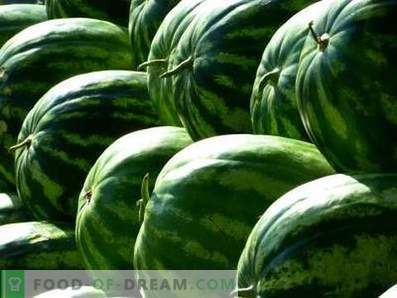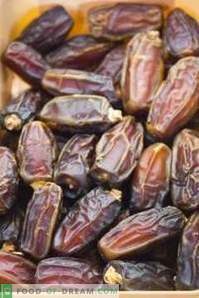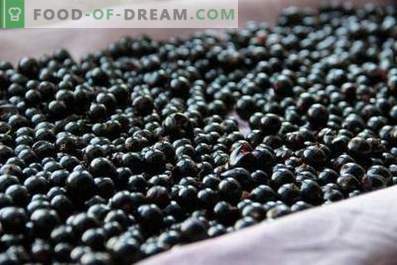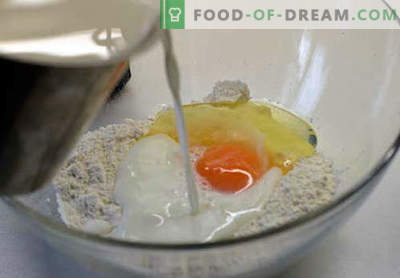
Many have heard about turnips only thanks to the fairy tale of the same name. But once turnip was one of the important sources of food from the Slavs, especially in the villages. It was boiled, extinguished, baked, used as a filling for pies.
Gradually, it was supplanted by potatoes, and now only gourmets and connoisseurs of Russian cuisine remember this vegetable.
But do not be so scornful of turnips, because it is not only tasty, but also useful.
- Its slightly bitter taste is due to the presence of glycoside siningrin, which is a powerful bactericidal agent. Therefore, turnips are used for hoarseness, for cold cough, asthma, bronchitis.
- Turnip contains beneficial trace elements: magnesium, iron, potassium, sulfur, phosphorus, calcium. This vegetable has vitamins C, B1, B2, A, PP.
- Turnip juice has a diuretic effect, and also improves the bowels.
- Boiled turnip, chopped to puree, is used as an ointment for gout.
The advantage of the turnip is that it is well kept, so under favorable conditions it can be enjoyed until spring.
When to harvest turnips
Turnip - a plant early ripening, so the crop can be removed twice a year. Early beam turnips, planted in March, are harvested in May, when the roots reach a diameter of 5 cm. Such a turnip is eaten immediately, without being stored.
For winter storage, the crop is harvested in October-November, when the leaves turn yellow. The best varieties of turnips that tolerate long-term storage are Gribovskaya local, Petrovskaya, Orbita.
The crop is harvested before the first frost, otherwise frozen roots will not be stored for a long time. The optimum temperature for collecting turnips is 8-10 ° heat. For digging turnips choose dry weather, then the roots will remain a little land, it does not have to clean manually, which very often leads to damage to the delicate skin.
A turnip is pulled out for the tops, gently prying a root vegetable with a pitchfork or a shovel. Immediately cut the greens almost at the level of the head, leaving a small stump.
Vegetables to be stored are not washed, but only slightly wiped with a soft cloth (only if the fruit is contaminated.)
Turnips removed from the ground immediately sorted. Slightly damaged roots will be processed, and the whole, with no signs of illness or deterioration, the fruit is dried a little, and then transferred to a permanent storage location - in the basement or cellar.
Conditions for keeping turnips
Turnip, like other root vegetables, cannot be stored in low humidity. But if the beet and radish skin is thick, then turnip, having a thin peel, with a low humidity will begin to dry out and wilt. At the same time, its resistance to diseases will significantly decrease.
The optimum air humidity in the room where the turnip is stored should be about 90%, and the air temperature should be 0-1 °. At the same time the room should be clean, with good ventilation.
How to keep turnips
Most often, root vegetables are stored in bins, but this method is not suitable for keeping turnips.
Delicate turnips are stored in tight boxes. Before laying the roots are recommended to sprinkle with ash or chalk. Then an alkaline environment is formed on their surface, which will not allow pathogens to spoil the crop.
At the bottom of the container poured a layer of sand, spread on it the fruit so that they do not come into contact with each other. Turnips fall asleep sand. Thus you can make 2-3 layers. The top row of turnips is also covered with a layer of sand. The sand should be of such moisture that it can be compressed into a clump, but the liquid is not felt. The filled boxes can be installed in a stack, but not higher than two meters in height.
Turnips can be stored on racks without slots. Root crops are laid on the shelves, sprinkling 2-3 cm of sand in each row. To prevent possible diseases, it is recommended to add chalk or slaked lime to the sand (for 1 kg of sand, take 1 kg of the additive).
Instead of sand, you can use sawdust, the humidity of which should be about 18%.
A good result gives storage of turnips in boxes covered with a thick film.
If there is not enough space in the cellar, turnips can be put in tight plastic bags with a capacity of 30 kg. In this case, the bags are set vertically and not tied.
For the preservation of root crops often used clay. To do this, make clay talker, the consistency of liquid sour cream. Each fruit is immersed in this substance, and then dried in air. The thin shell that forms on the surface of the turnip will not allow it to wither or fall ill.
If there is a private household, turnips can be stored in the ditches.
- On a dry high place they dig a moat 70-80 cm deep.
- Straw is poured on the bottom, onto which turnips are laid so that the fruits do not touch each other. They are covered with sand. On top of it you can build another 1-2 rows.
- The ditch is covered with sand in the form of an embankment 30-40 cm high. To drain water, dig longitudinal grooves nearby.
- In winter, in order to prevent the turnips from freezing, the mound is covered with burnt manure, which is removed only with the onset of a thaw. To scare away mice and other rodents, a shag or tobacco is put on top of the first layer of sand, which is covered with the remaining sand.
How to store turnips in an apartment
In the apartment, the storage conditions for turnips should be the same as in the basement or cellar. That is, you need a cool room, such as a closet or a glassed-in balcony.
A turnip is placed in a box, the bottom of which is covered with straw. Each row of roots poured a little wet sand. So that in winter, turnip does not freeze, the box is wrapped with a blanket.
If turnips a little, it is stored in the refrigerator. But there it can lie for about 2 weeks.
Before being sent for storage, they cut the tops in such a way as not to damage the fetus. Then turnips are washed and dried well. Placed in a plastic bag, which make small holes for air circulation. Cleaned on the shelf for vegetables. To prevent condensation from accumulating in the bag, it is better not to tie it.
Sometimes there is very high humidity in the fridge. To prevent the turnip fruit from getting wet, you can put a paper towel in the bag that will absorb excess moisture. A turnip will remain much longer if each root crop is wrapped in paper and only then put in a bag.
Tip
Turnips need to periodically sort out to notice a spoiled root in time. It is immediately separated from the total mass and sent for recycling.











































